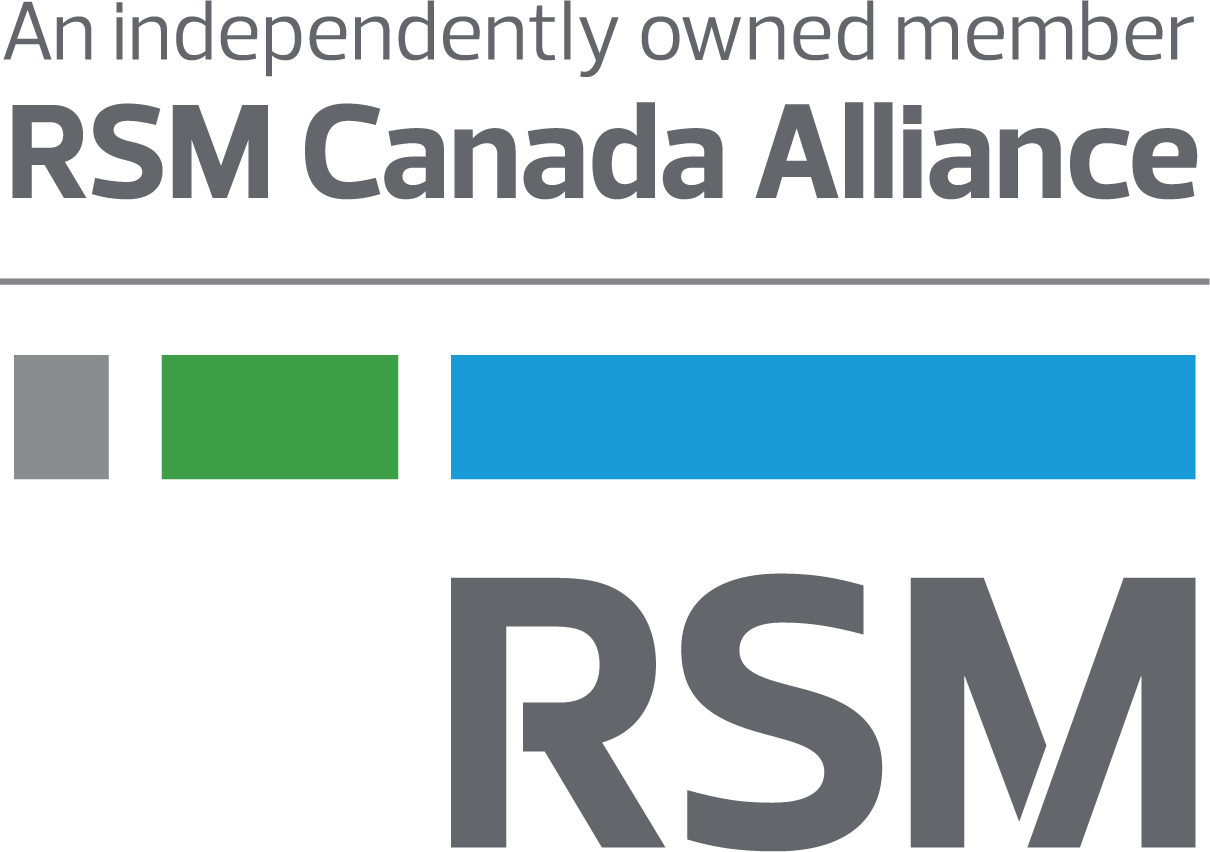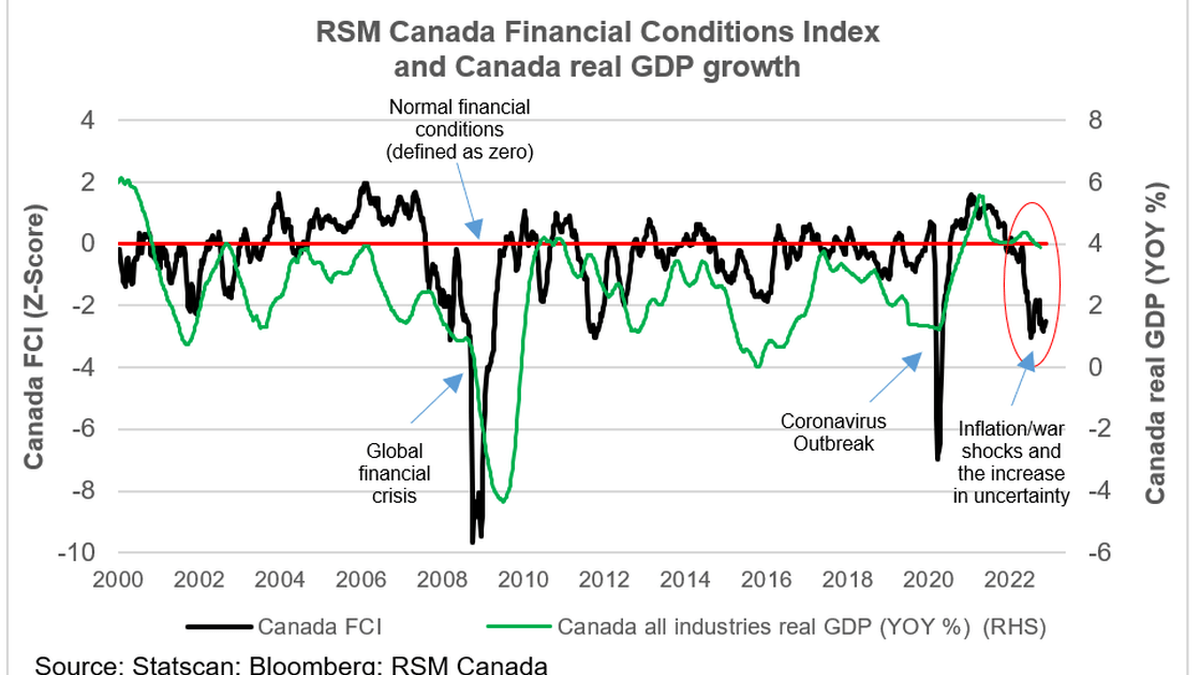REAL ECONOMY BLOG | December 20, 2022
Authored by RSM Canada
Tightening financial conditions are hurting the Canadian economy to the point where the rising risk of a recession and a housing contraction much larger than anticipated cannot be discounted.
We expect the Bank of Canada to raise its policy rate to a peak of 4.75% early next year.
Although we expect the Bank of Canada to raise its policy rate to a peak of 4.75% early next year, after that the central bank will most likely use a lift-and-hold policy that will keep financial conditions tight.
Over the past year, the Bank of Canada has increased its policy rate from 1% to 3.75% to tame the highest inflation rate since the oil crises of the 1980s. These tightened financial conditions are expected to crimp consumer and business investment, cooling the economy.
What awaits? We offer some insights into the Canadian economy and how it operates.

The Bank of Canada adopted quantitative easing…
The Bank of Canada followed other central banks during the pandemic when it purchased long-term government securities to maintain bond market liquidity and to pressure long-term interest rates lower. It’s a strategy known as quantitative easing.
As the recovery from the pandemic took hold in 2021, the Bank of Canada began reducing its holdings of those securities.

… but did it work?
It’s debatable if the increase in bond purchases during the pandemic dampened Canada’s long-term interest rates during the pandemic.
After all, there wasn’t much room for interest rates to fall. Long-term rates had already declined to 1.5% before the pandemic, only to fall below 1% in 2020.
In 2022, though, the Bank of Canada shifted gears and began reducing its holding of government bonds. Ten-year yields over this time increased upward of 180 basis points.
So while quantitative easing may not have had a significant impact on interest rates, recall the dual purpose of central bank purchases. The injection of liquidity kept the financial sector flush, prevented a bond-market freeze-up and reduced the chance of an economic collapse—no small feat during a pandemic.

The bond market has sold off
More recently, the bond market in Canada has sold off, prompting the question of what was behind that selling.
We can start with the like-mindedness of the monetary authorities in the advanced economies, especially the Bank of Canada and the Federal Reserve.
Although their monetary policies were not in lock-step, the Bank of Canada and the Fed quickly pushed overnight rates from virtually zero to 3.75% and 4%, with expectations for further rate hikes if inflation remains persistent.

U.S. and Canada have a connection in the bond market …
Long-term interest rates are determined by expectations of the policy rate and investor compensation for the risk of holding a security over its maturity. We should expect 10-year government bond yields to move together if the monetary policies and risk assessments of two interconnected economies are in sync.

… and that extends to equities as well
It’s not just the bond market. The trend and level of equity market returns of the major Canadian and U.S. stock exchanges are synonymous, suggesting the co-dependence of corporate profitability.

There is a difference, though…
If there is a difference between U.S. and Canadian financial markets, it is in the currency market.
The Canadian dollar often fluctuates along with swings in the commodity markets. Recent examples include the 2014-16 crash in commodity prices that coincided with the depreciation of the Canadian dollar, the 2020 commodity price hike and appreciation of the Canadian dollar, and finally, the subsequent decline of commodity prices pressuring the Canadian dollar down again in 2022.

… and this affects Canada’s growth
Since 2008, commodity prices have coincided with real GDP growth. We attribute this to the value of the Canadian dollar becoming dependent on commodity pricing. At higher prices of commodities and at a higher value of the Canadian dollar, exports of Canadian commodities add that much more to the value of Canadian economic output.

Questions? Fill in the form below
This article was written by Joseph Brusuelas and originally appeared on 2022-12-20 RSM Canada, and is available online at https://realeconomy.rsmus.com/financial-conditions-and-canadas-real-economy/.
RSM Canada Alliance provides its members with access to resources of RSM Canada Operations ULC, RSM Canada LLP and certain of their affiliates (“RSM Canada”). RSM Canada Alliance member firms are separate and independent businesses and legal entities that are responsible for their own acts and omissions, and each are separate and independent from RSM Canada. RSM Canada LLP is the Canadian member firm of RSM International, a global network of independent audit, tax and consulting firms. Members of RSM Canada Alliance have access to RSM International resources through RSM Canada but are not member firms of RSM International. Visit rsmcanada.com/aboutus for more information regarding RSM Canada and RSM International. The RSM trademark is used under license by RSM Canada. RSM Canada Alliance products and services are proprietary to RSM Canada.
 |
Virtus Group is a proud member of the RSM Canada Alliance, a premier affiliation of independent accounting and consulting firms across North America. RSM Canada Alliance provides our firm with access to resources of RSM, the leading provider of audit, tax and consulting services focused on the middle market. RSM Canada LLP is a licensed CPA firm and the Canadian member of RSM International, a global network of independent audit, tax and consulting firms with more than 43,000 people in over 120 countries. Our membership in RSM Canada Alliance has elevated our capabilities in the marketplace, helping to differentiate our firm from the competition while allowing us to maintain our independence and entrepreneurial culture. We have access to a valuable peer network of like-sized firms as well as a broad range of tools, expertise, and technical resources. For more information on how the Virtus Group can assist you, please call us at 855-206-5697. |

